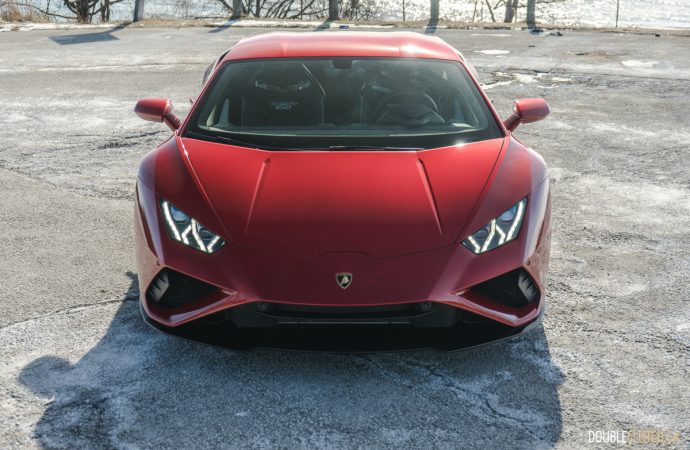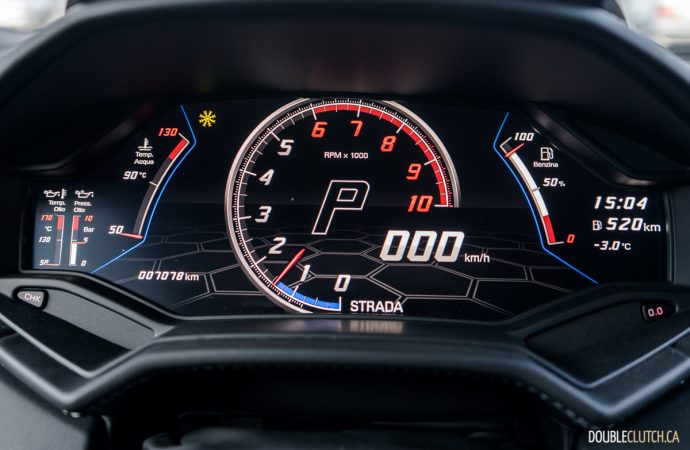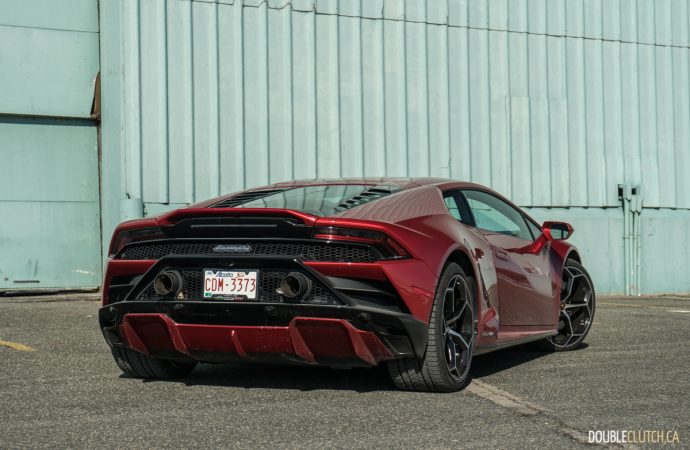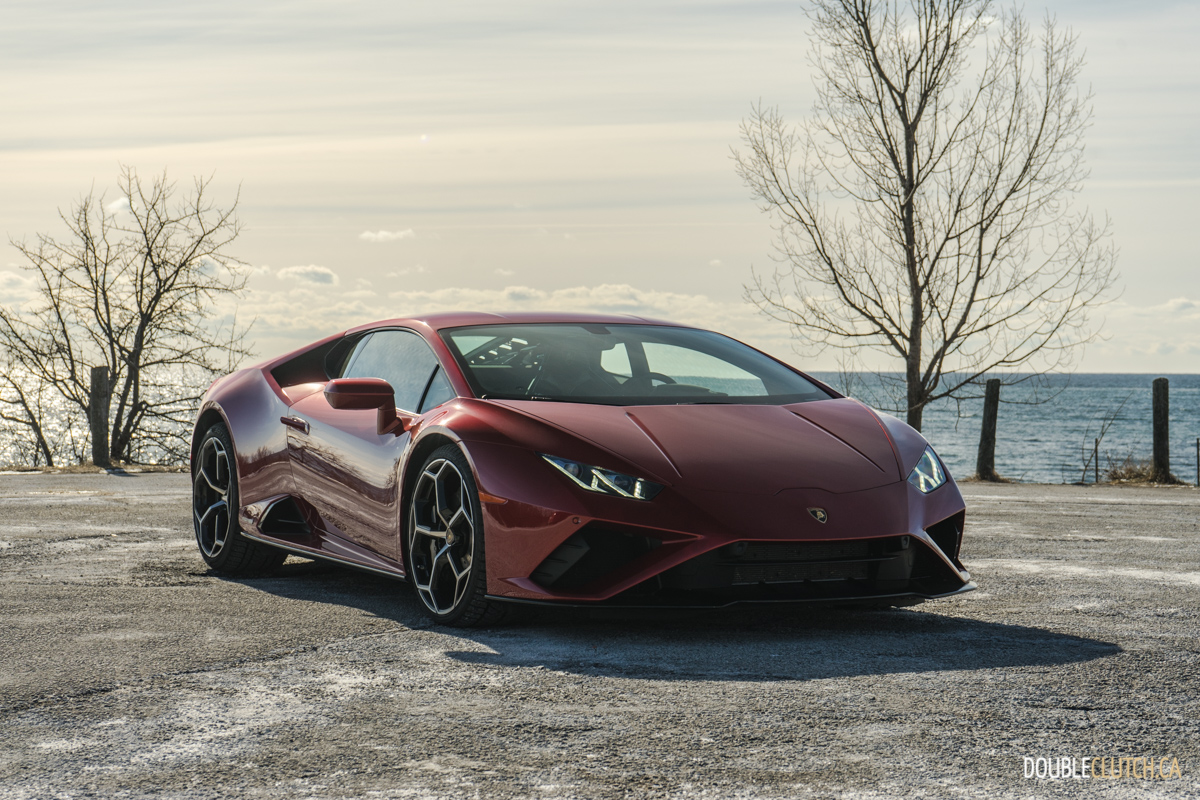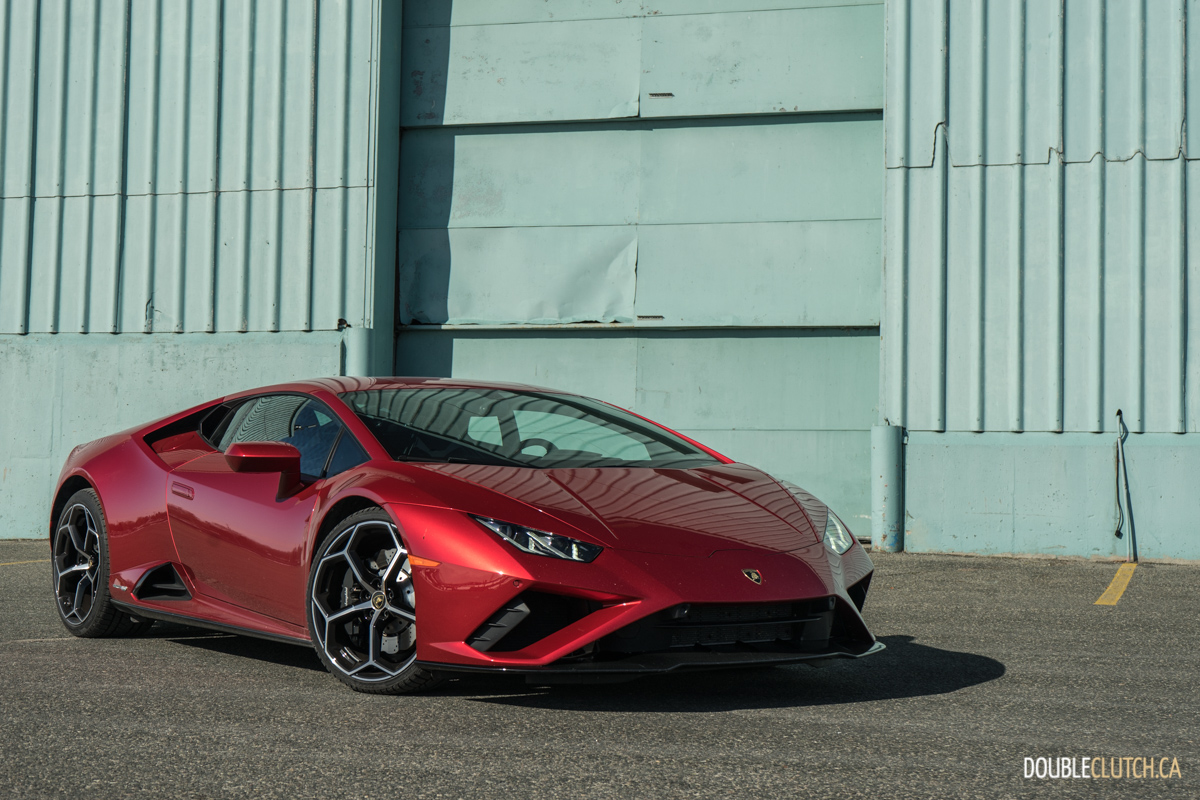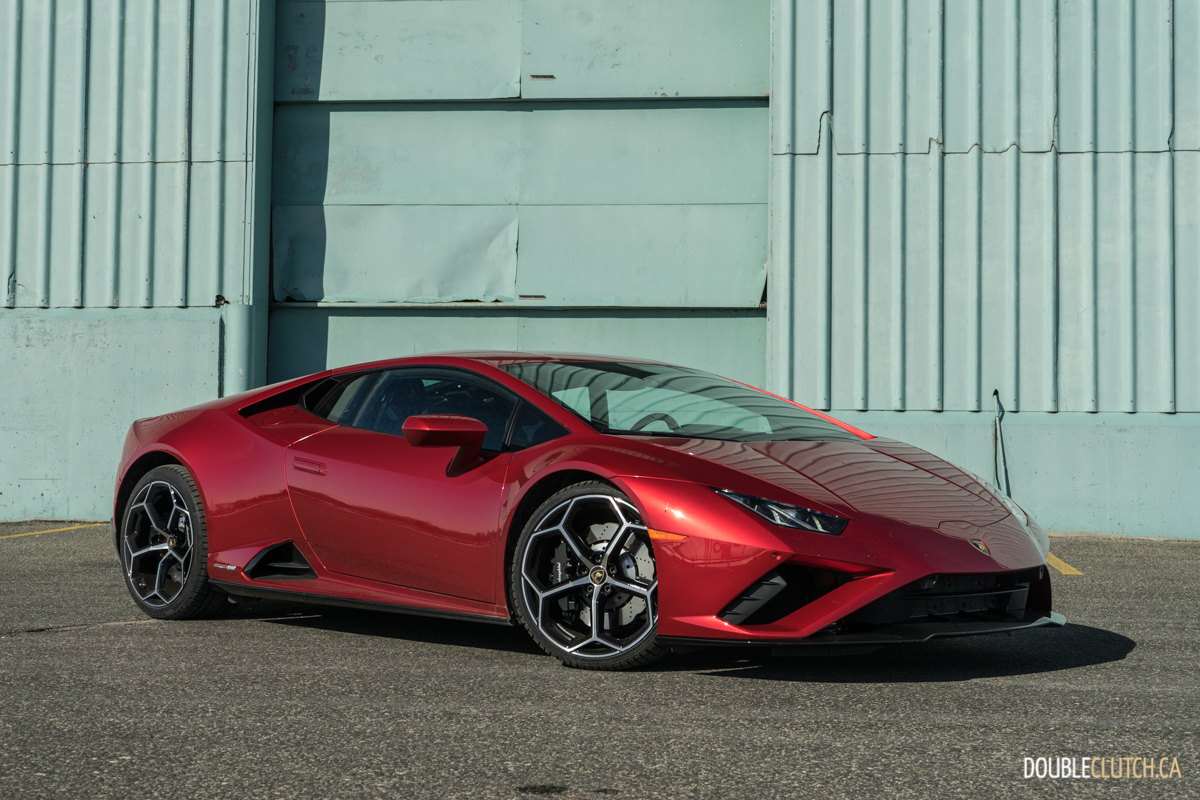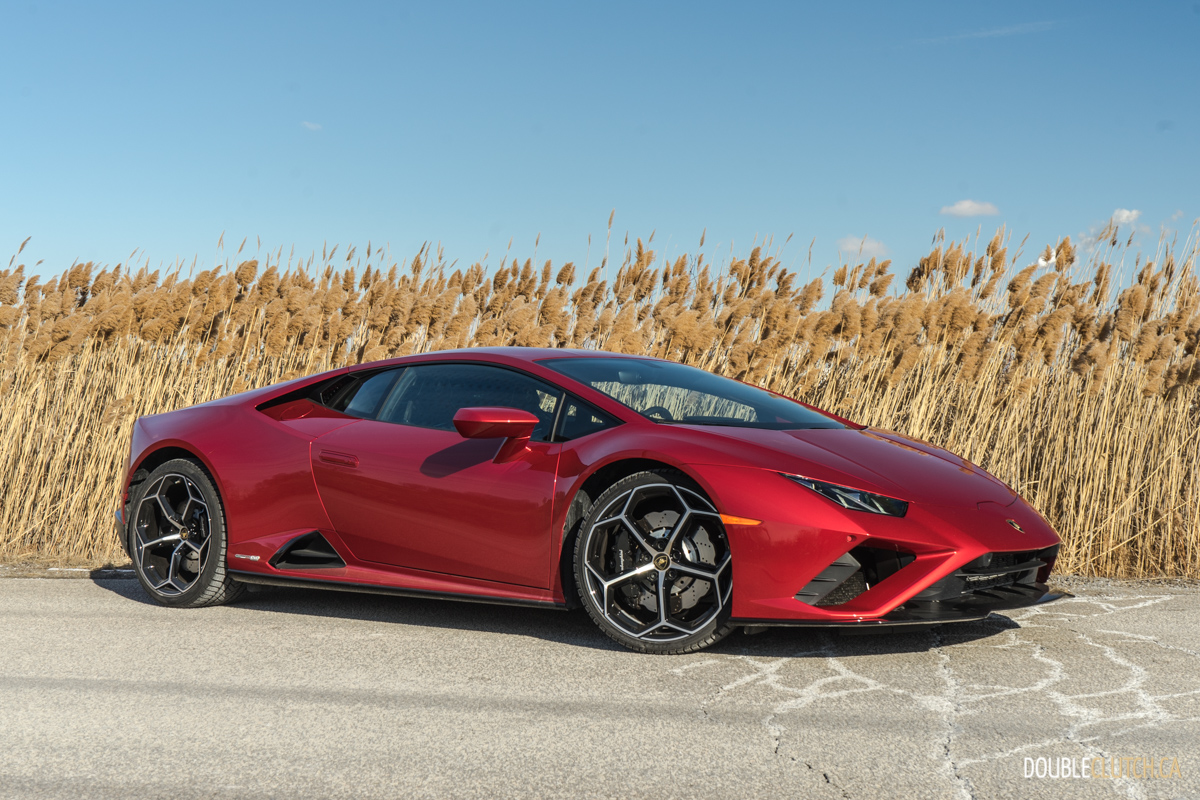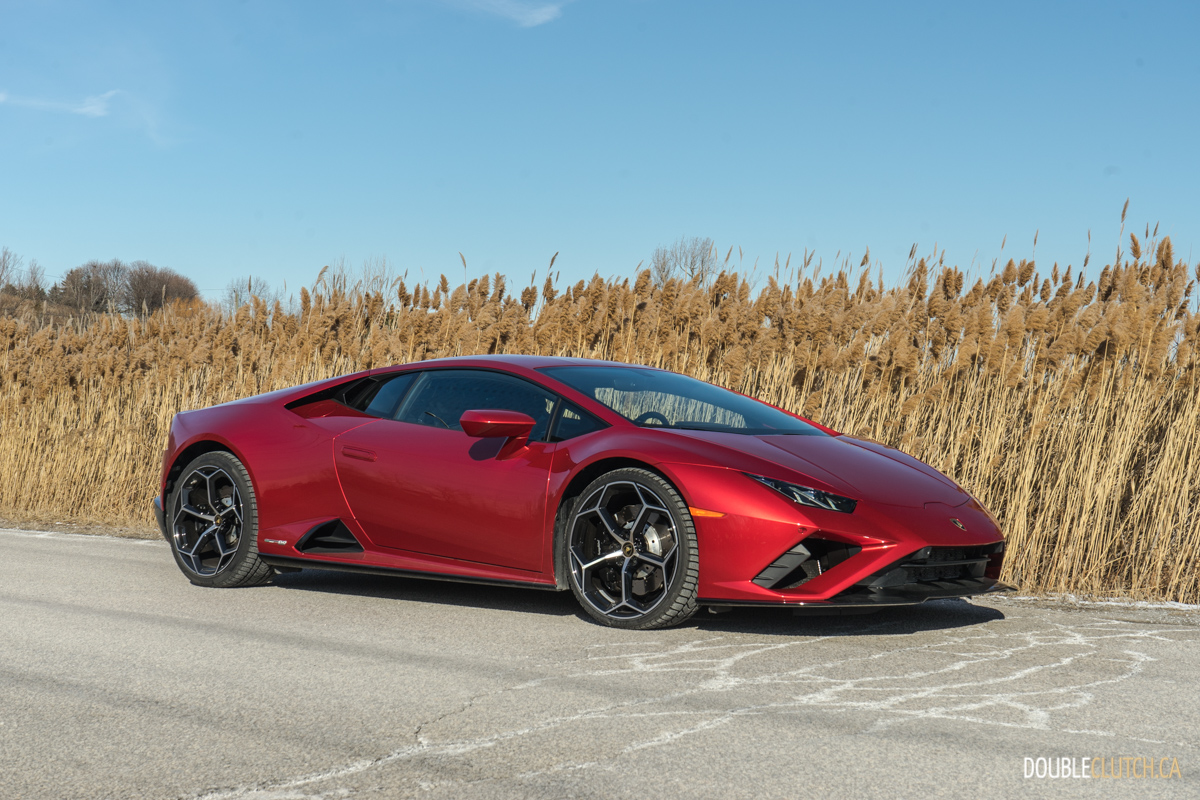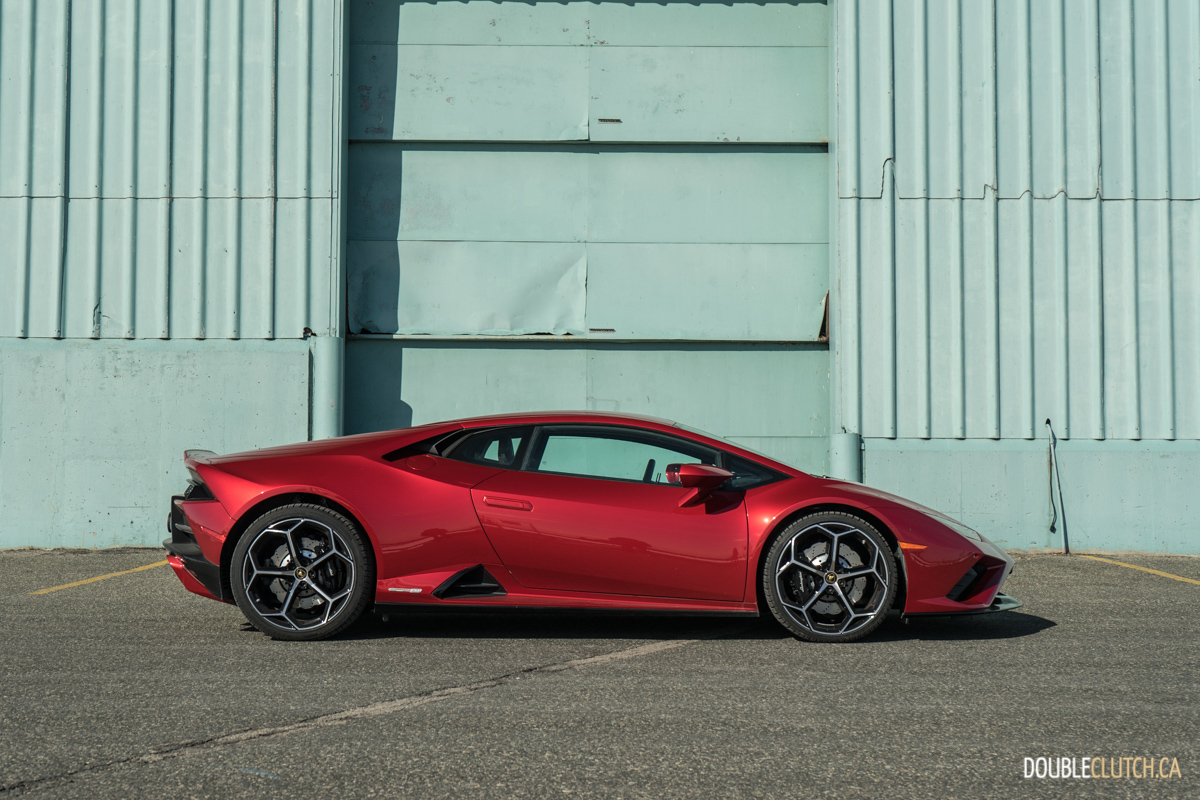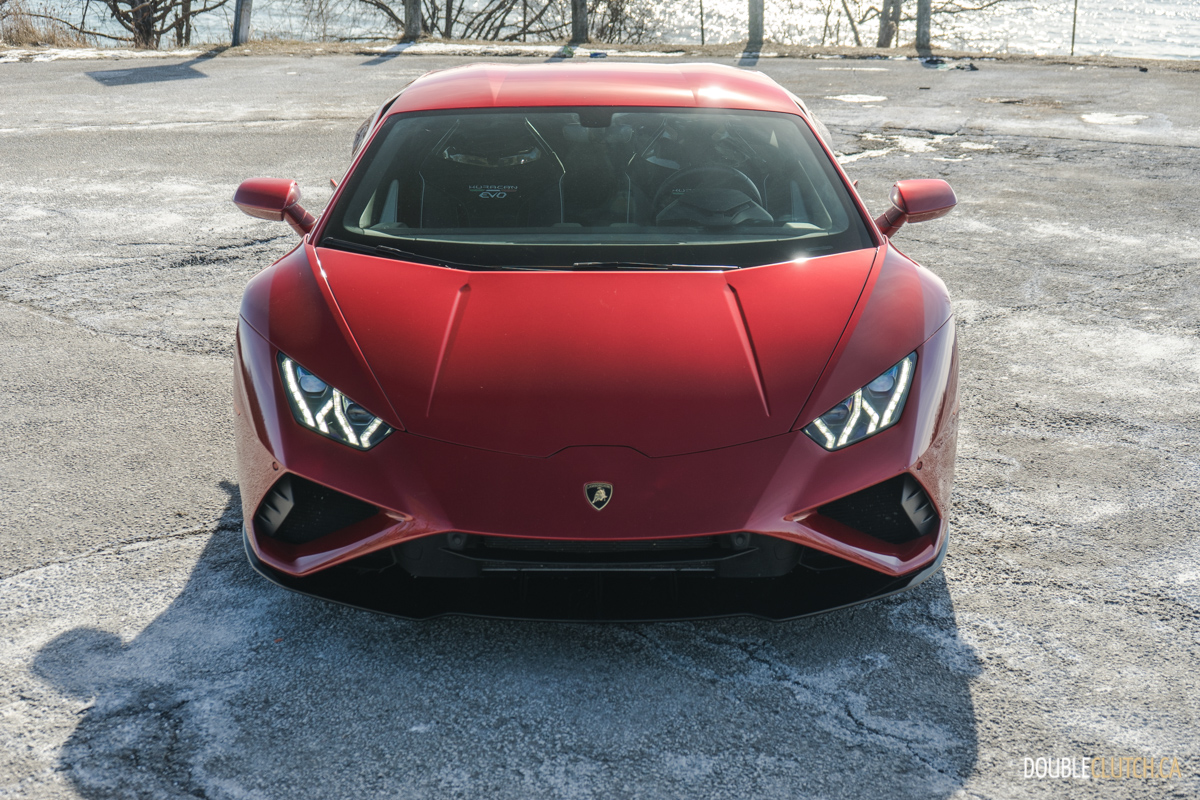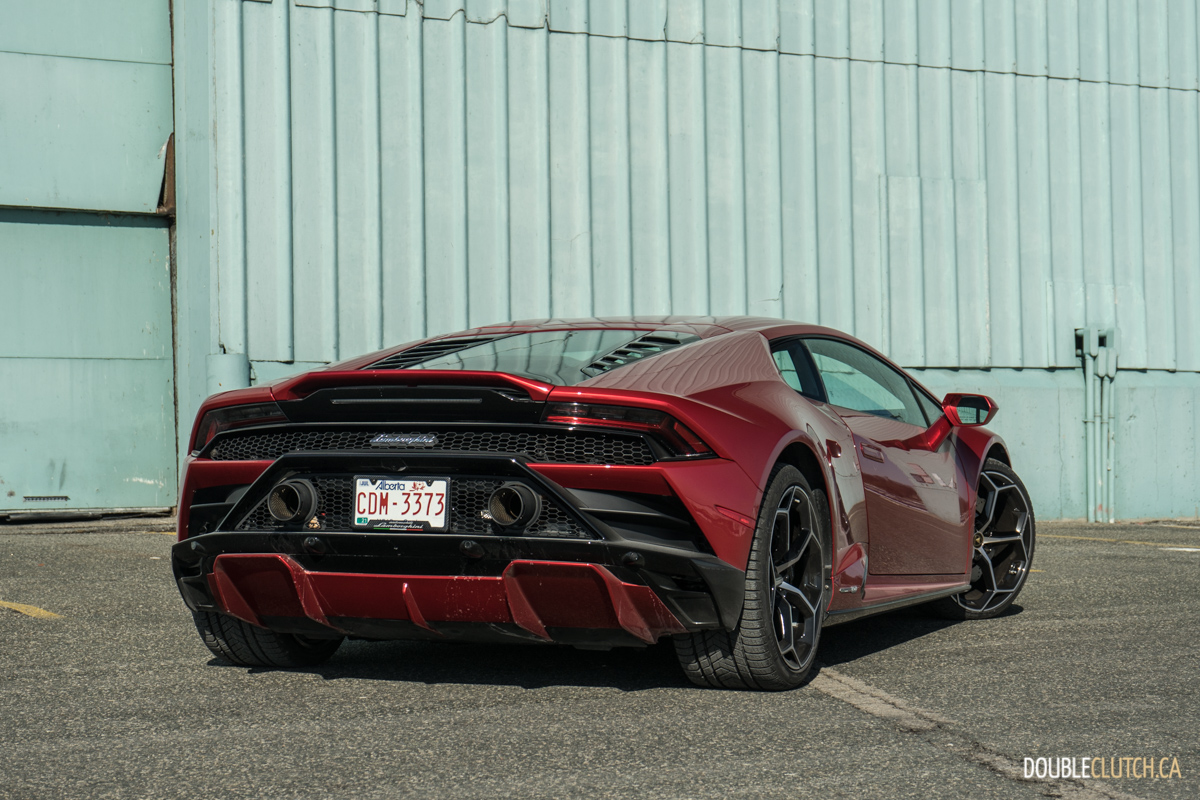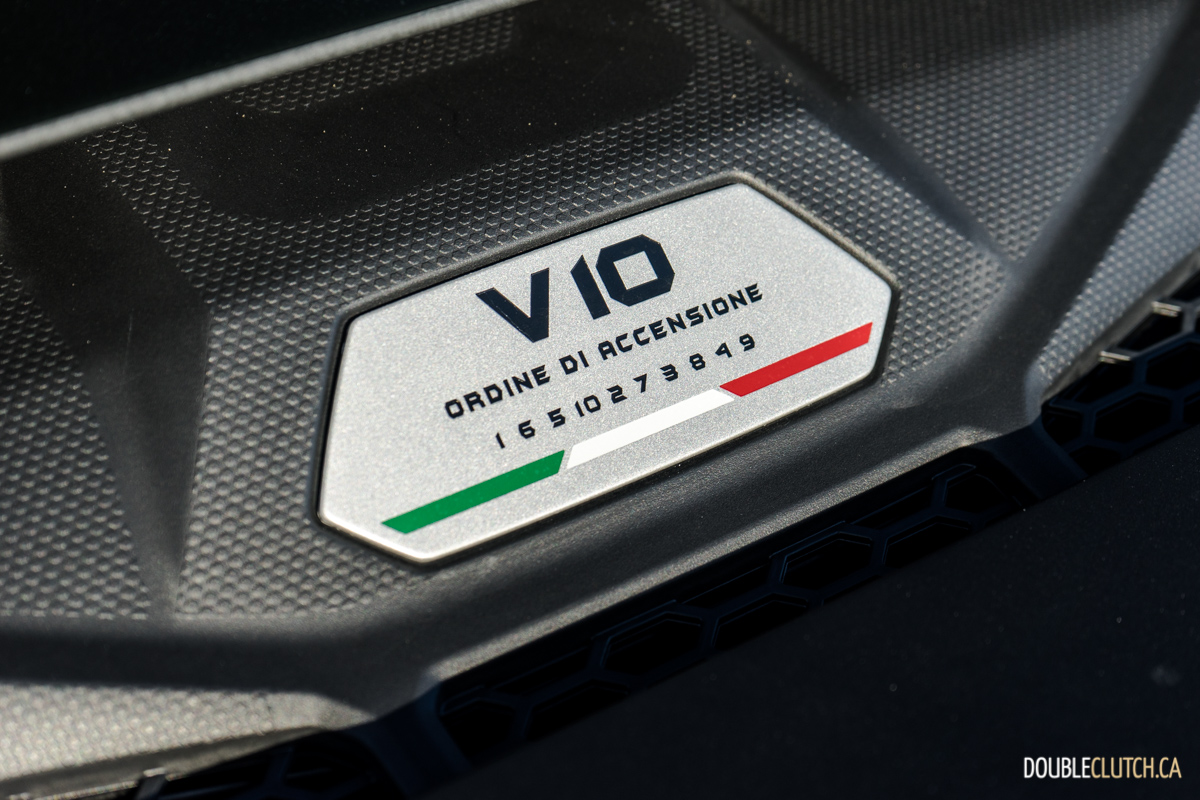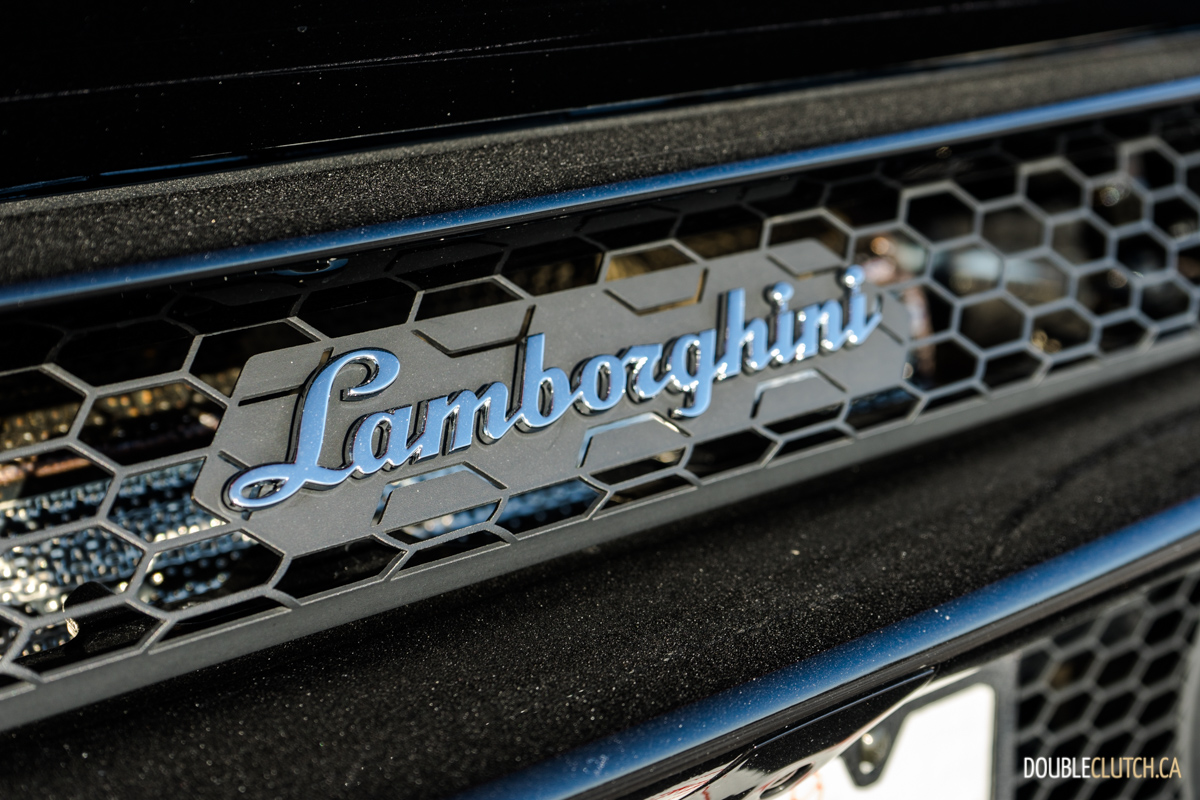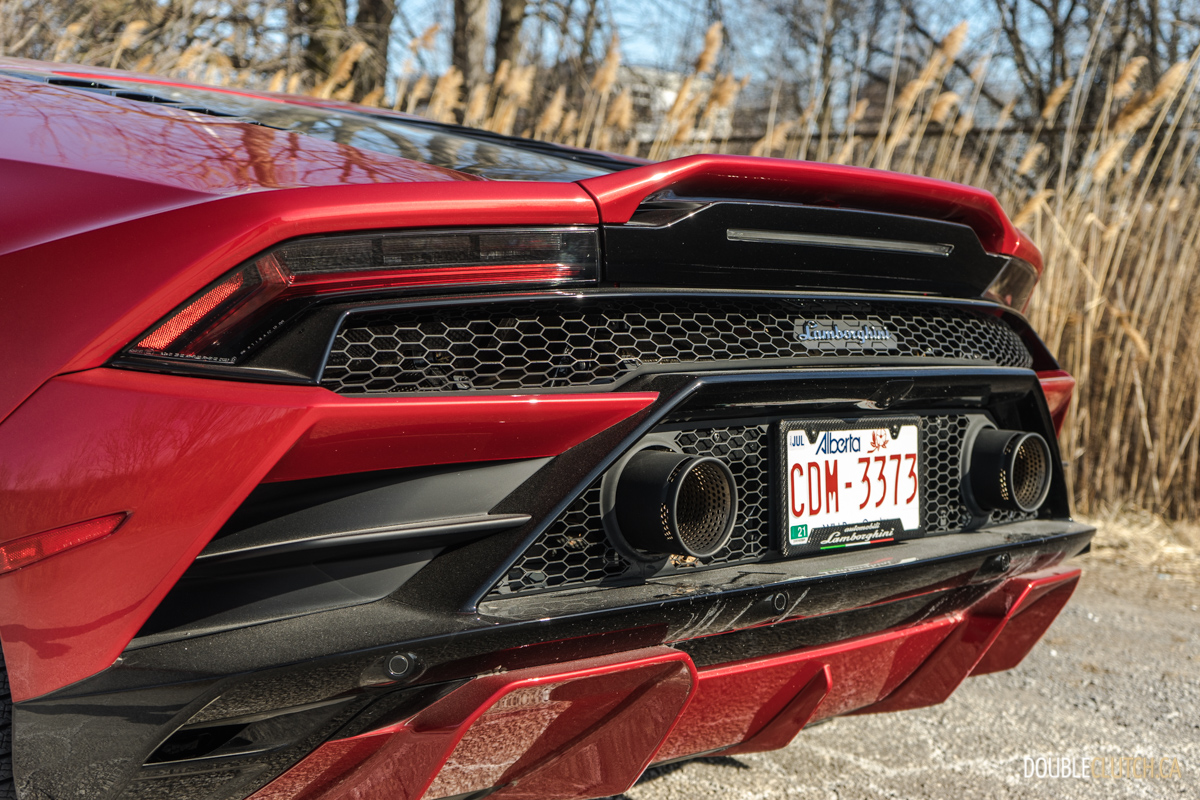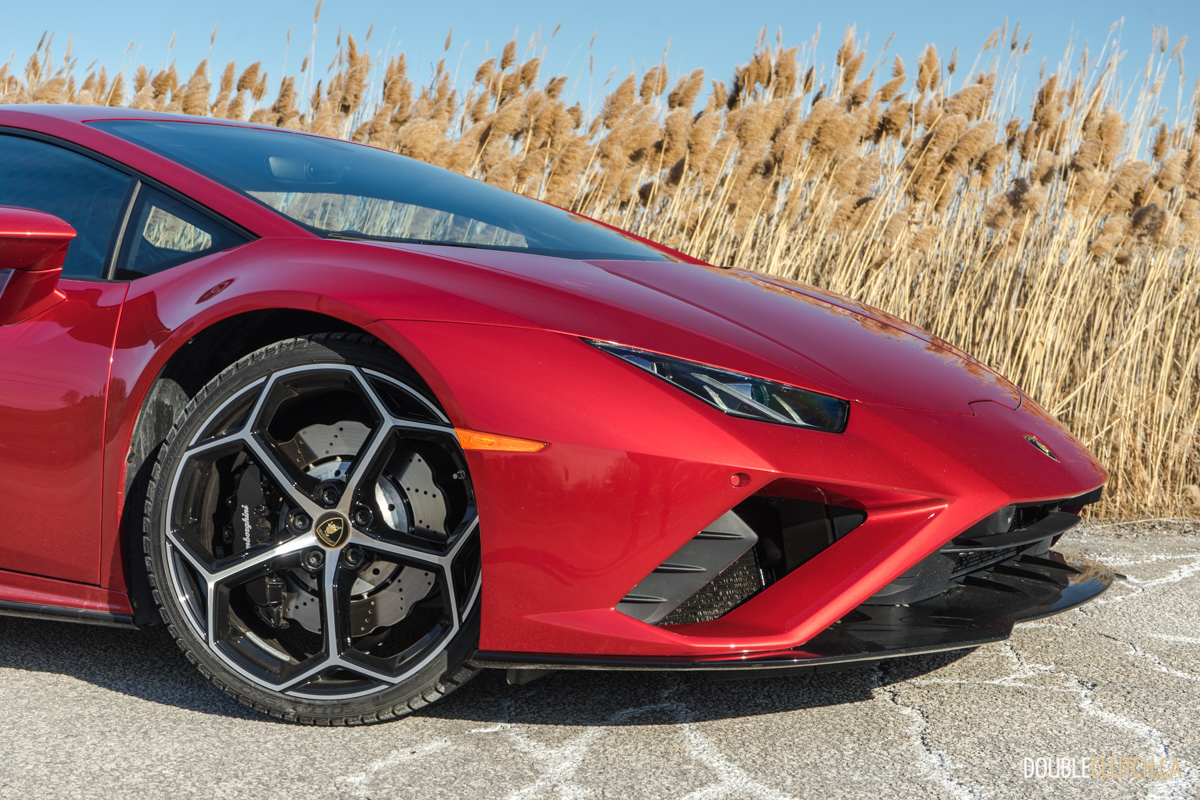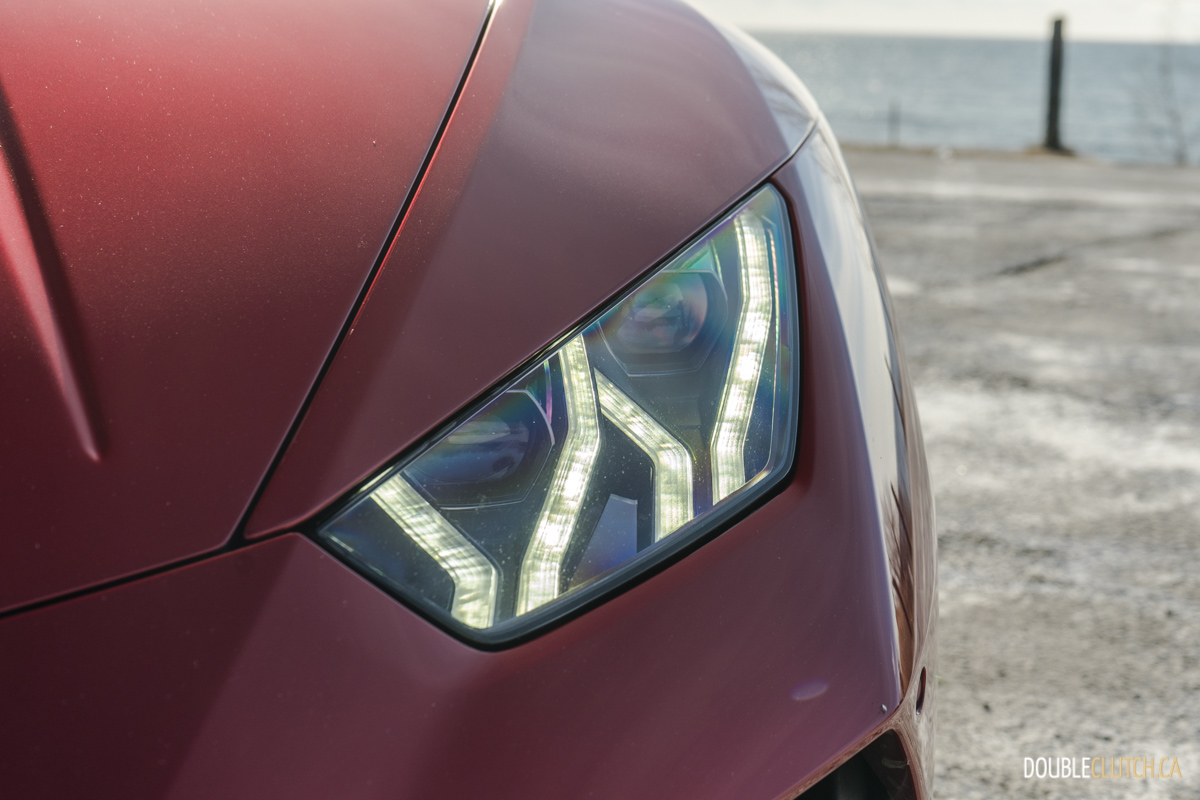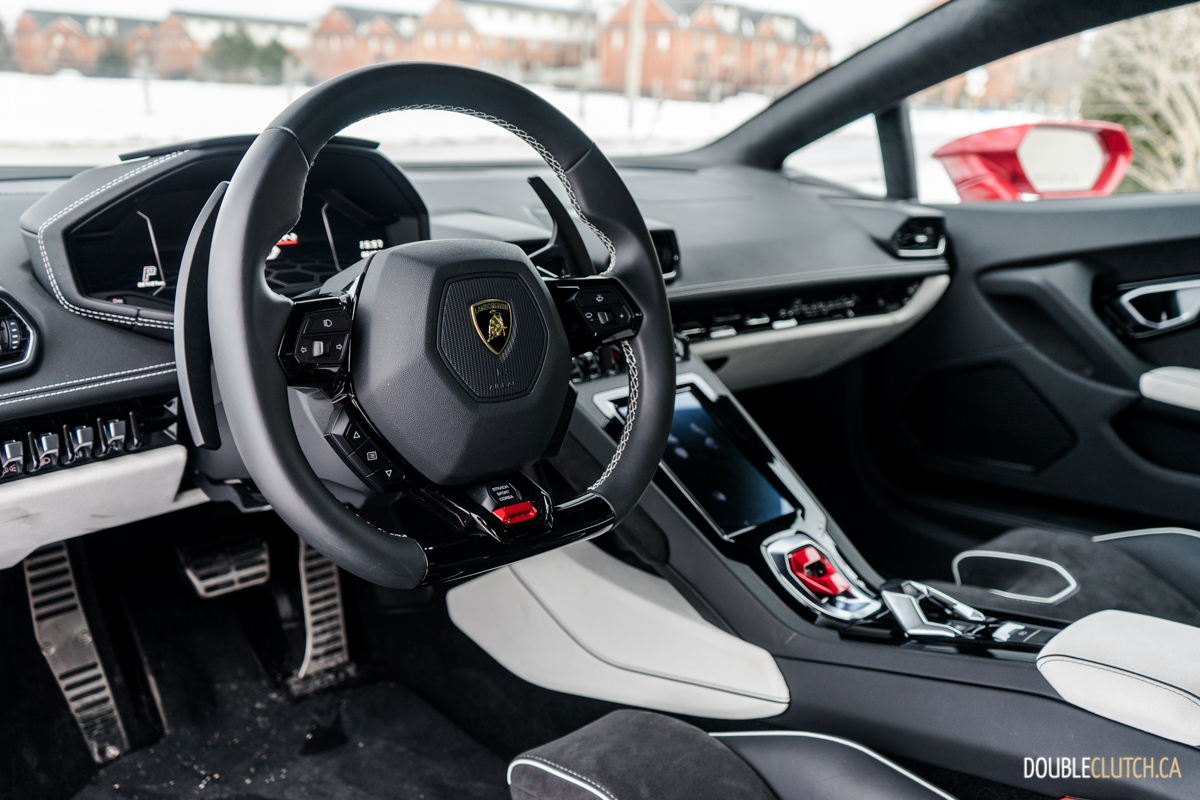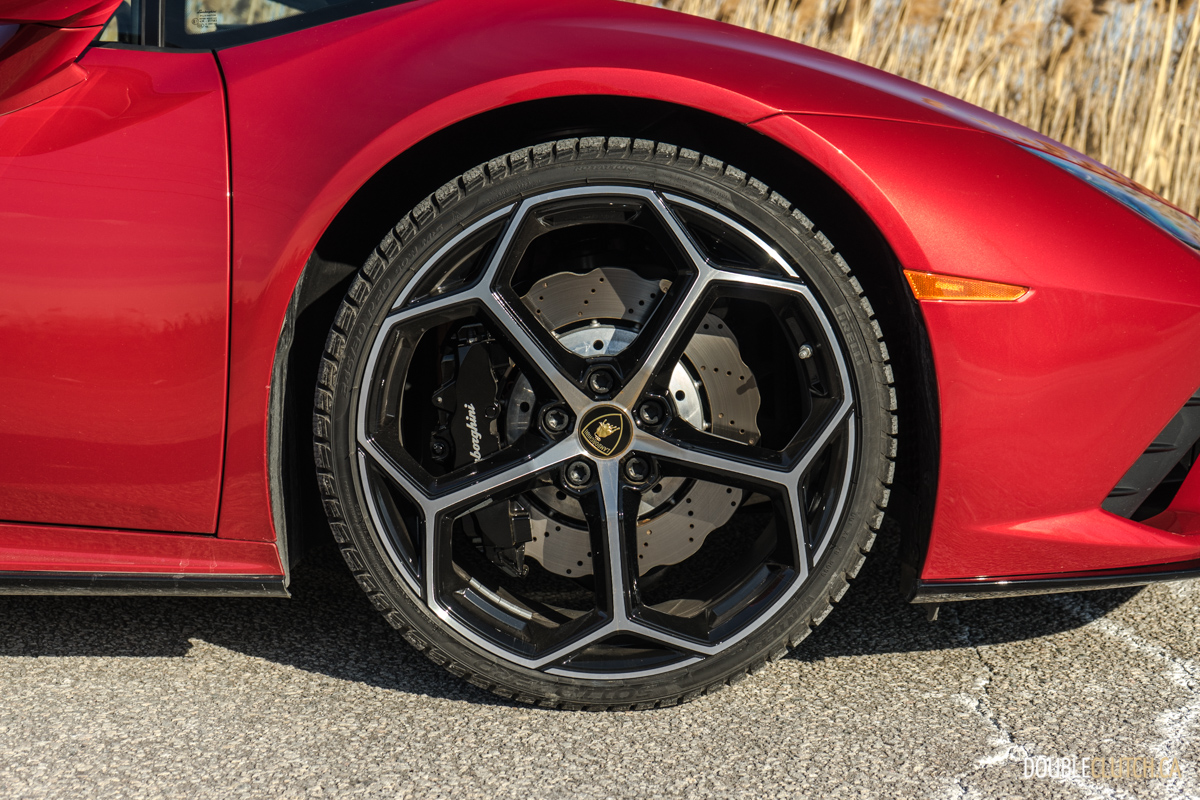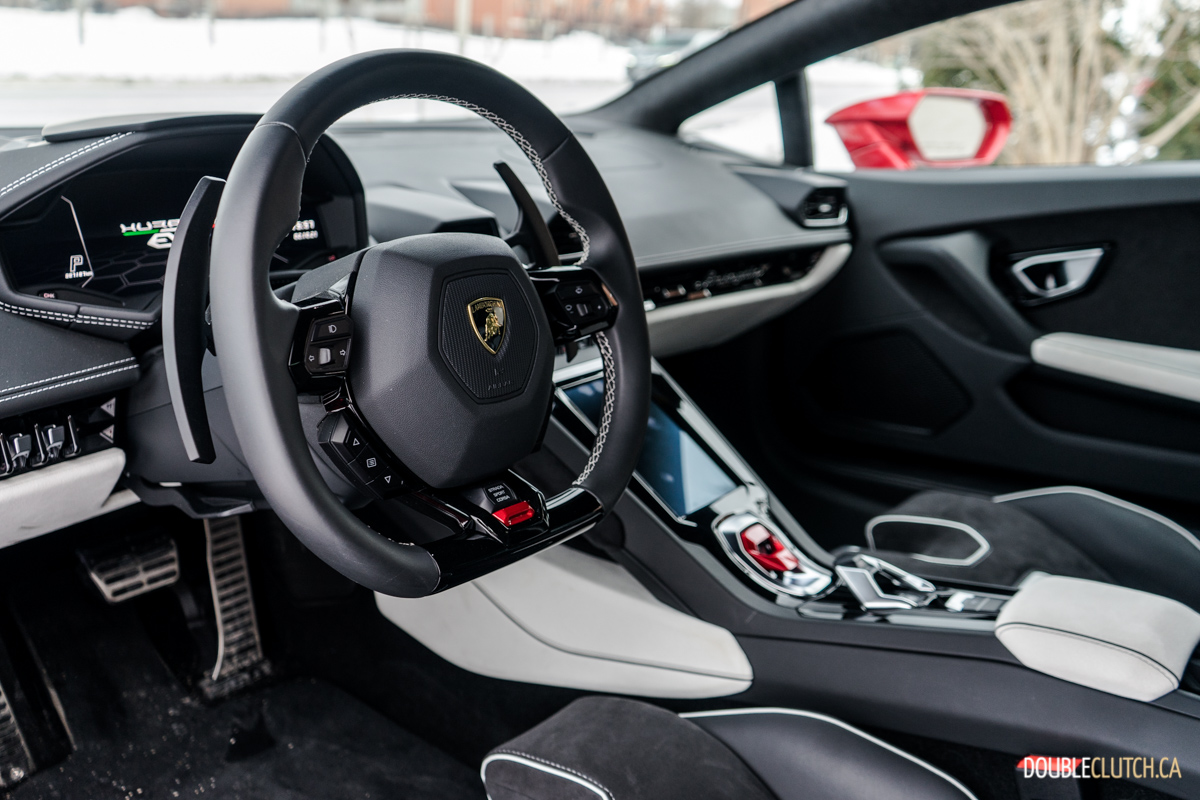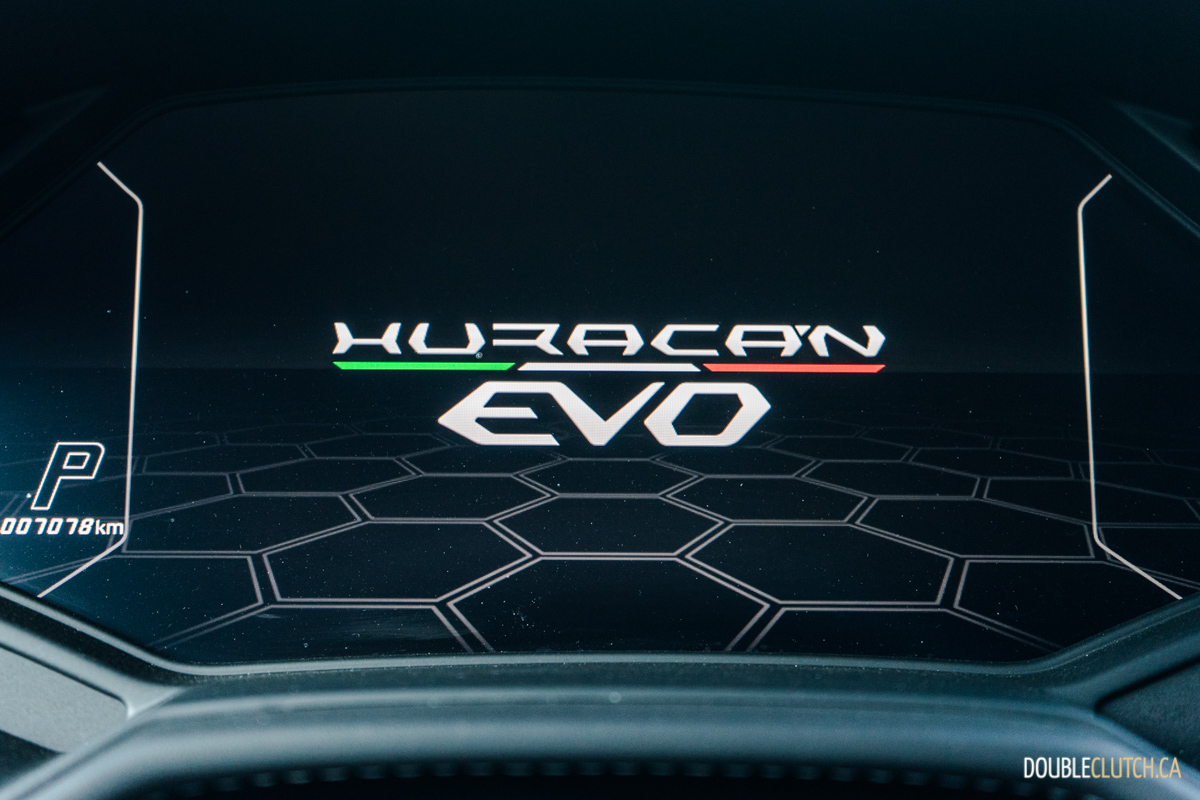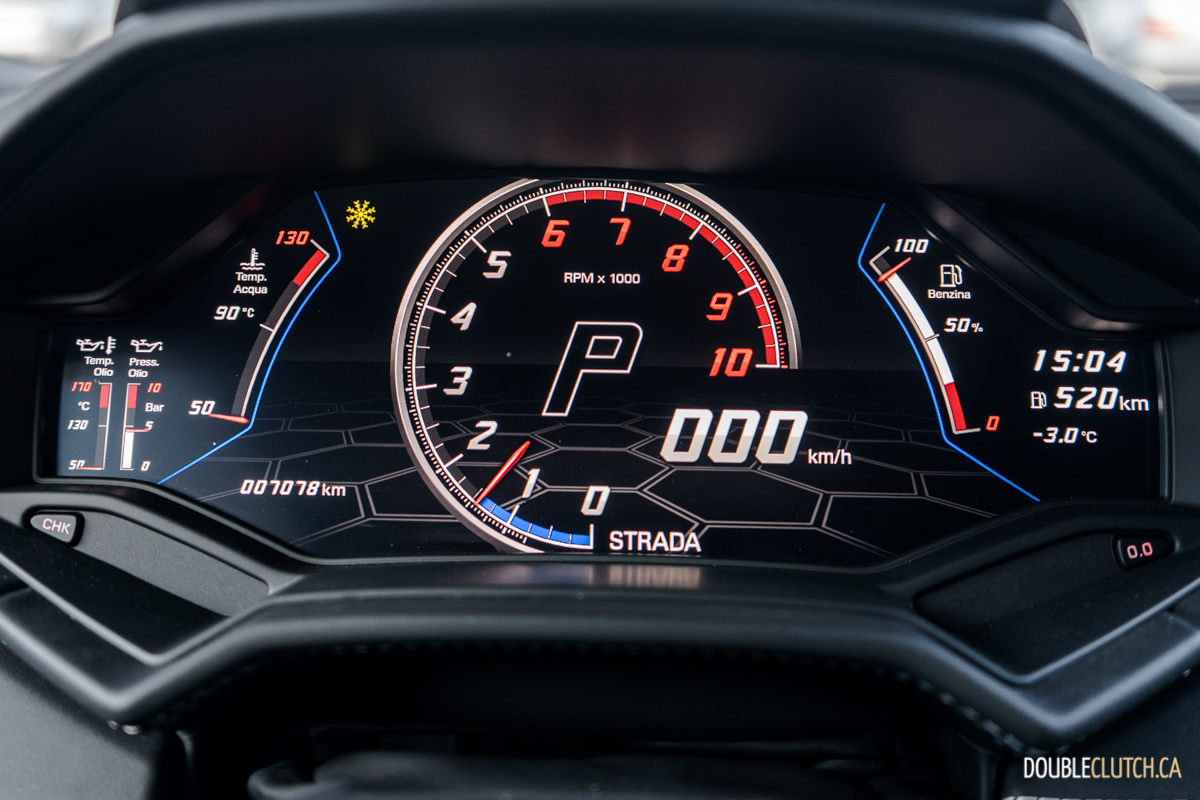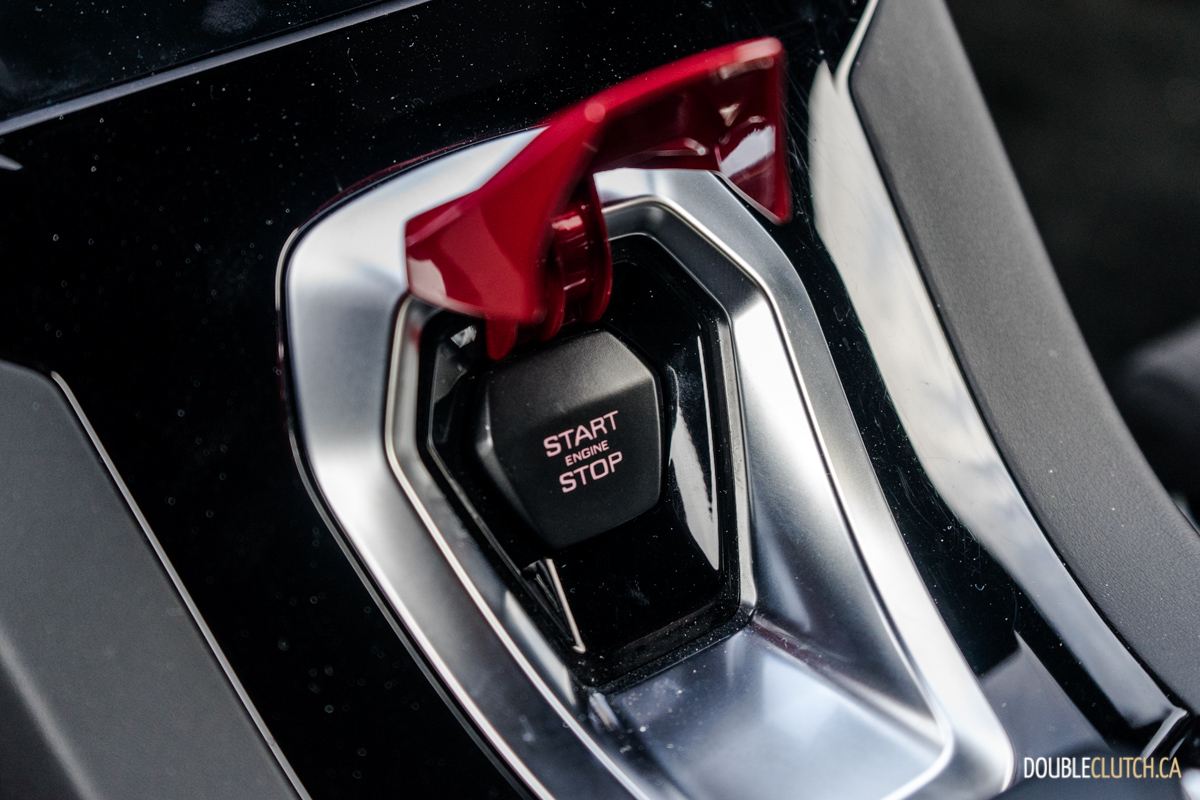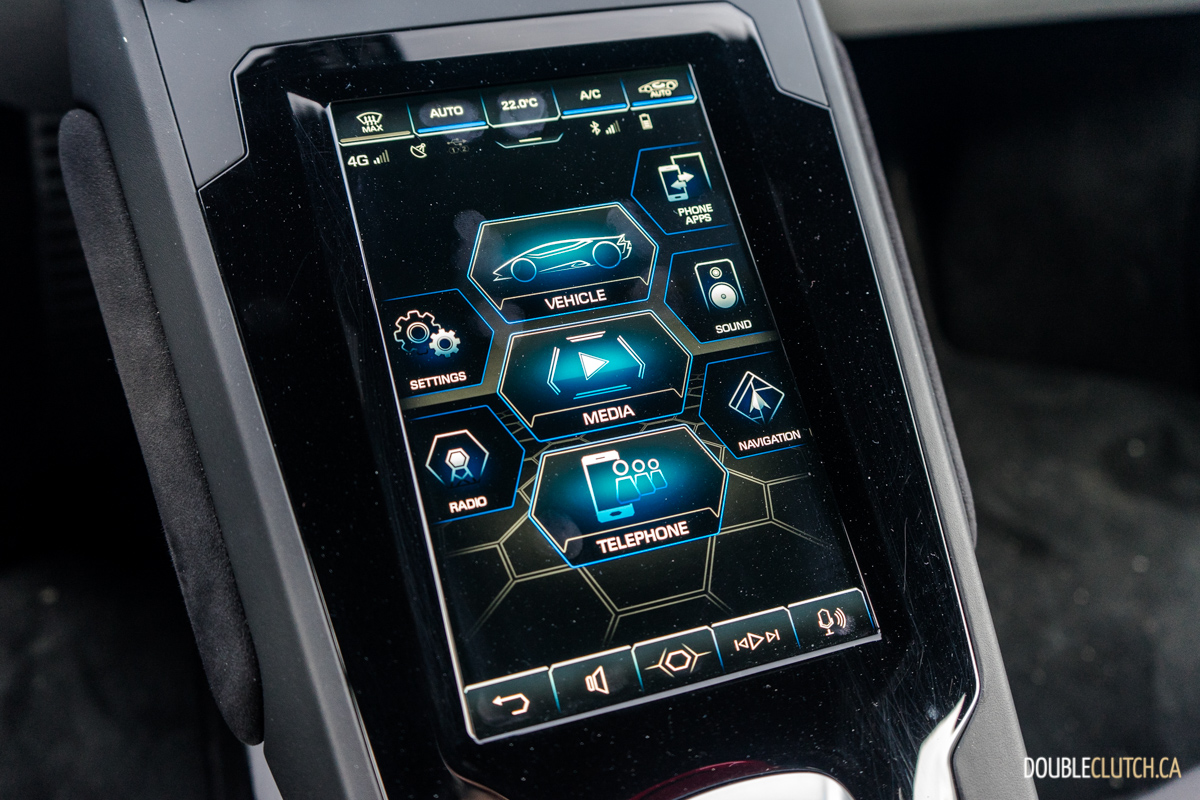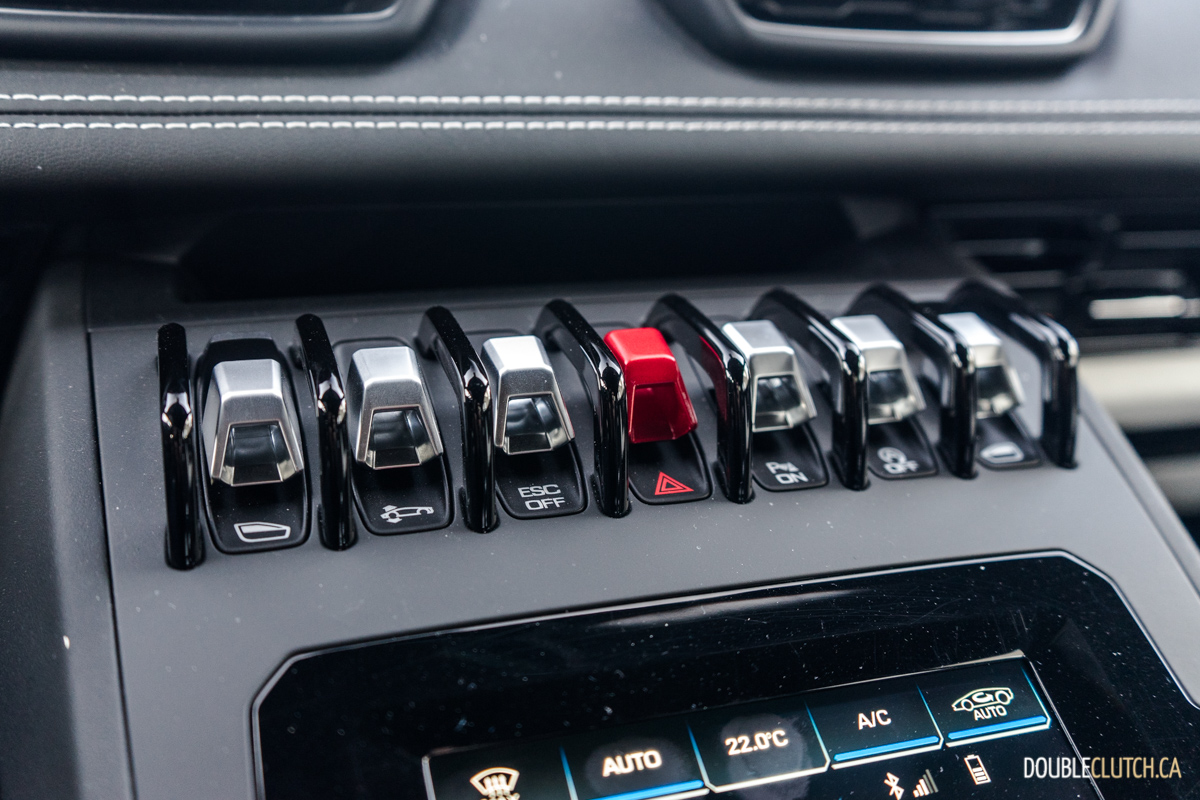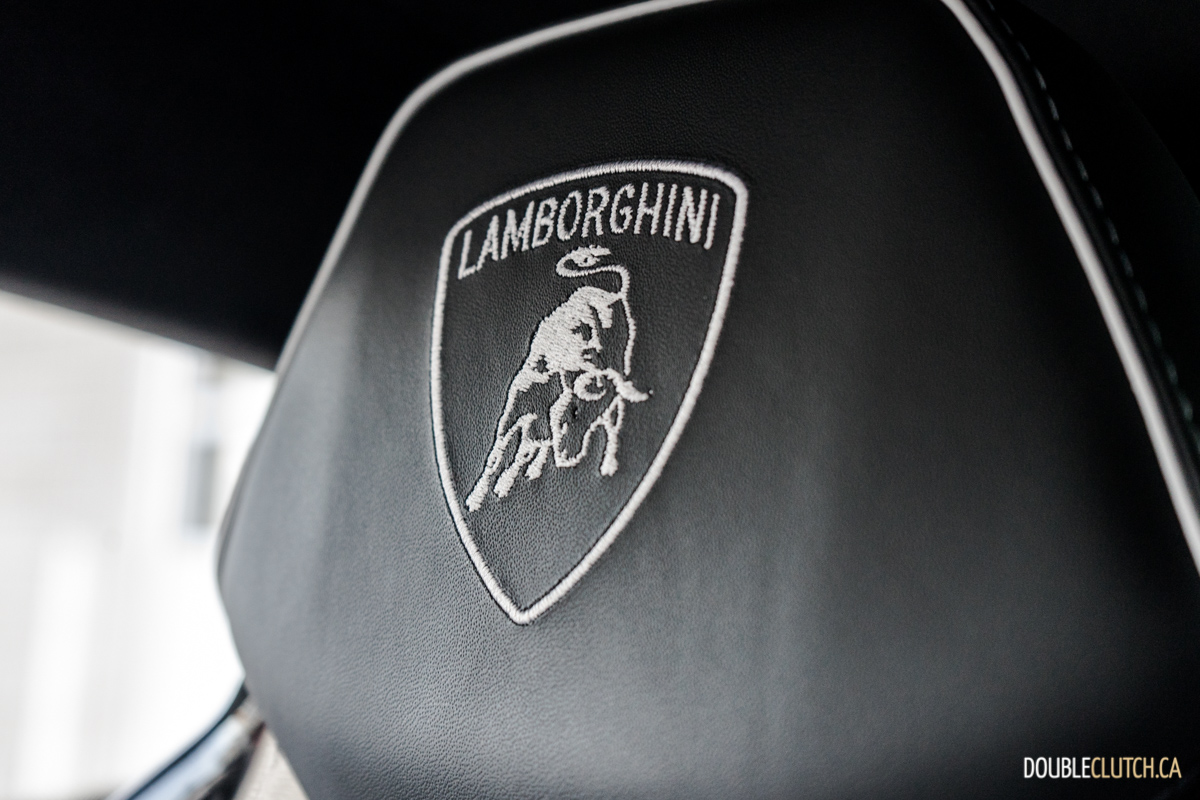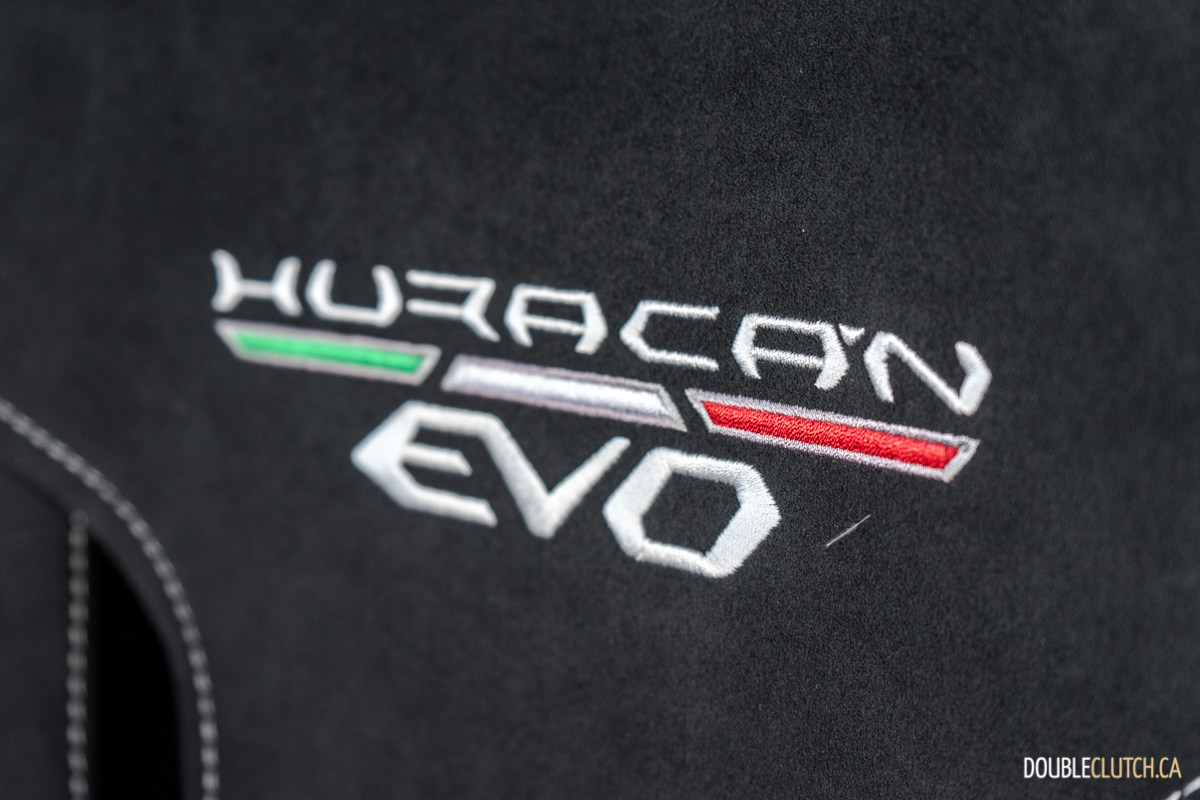The modern iteration of the “baby” Lamborghini was introduced in 2004, under the Gallardo name. It spawned many different iterations, and ultimately also a closely related cousin, the Audi R8. The successor to the Gallardo is the Huracan, and Lamborghini offered up their latest offering for some very scientific cold weather testing. This is the 2021 Lamborghini Huracan EVO RWD, and differs from the last Huracan Evo we tested in one fundamental way.
It’s rear-wheel-drive. The regular Huracan Evo gets all-wheel-drive and rear-wheel-steering. This one deletes the front driveshaft as well as the rear wheel steer, and this results in a savings of 72 pounds of weight. It also shifts weight further to the rear, and the 3,550 pound Evo feels lighter than it should, and notably lighter than the all-wheel-drive model. In sub-zero temperatures, grip is obviously just a series of hopes and dreams, but equipped on winter tires as our tester was, the conditions were mostly manageable.
Like all Huracan models, the Evo RWD gets a 5.2-liter naturally aspirated V10 engine mounted behind the passenger compartment. Output is 602 horsepower at a screaming 8,000RPM, and 413 lb-ft. of torque at 6,500RPM. This model hits 100km/h in just over three seconds, which is still insanely fast, but the lack of four-wheel grip means it’s at least a half second slower than the AWD model. For context, the latest mid-engine Corvette can hit 100km/h in less time, but won’t evoke nearly as much emotion as the Lamborghini.
This thing moves like a bat out of hell, and makes a glorious soundtrack while doing it. Power comes on instantly, and the seven-speed dual-clutch gearbox is brilliant. It’s much quicker and more dramatic in operation than the Aventador’s transmission, and adds to the immediacy of the Huracan’s response. The improved Performance Traction Control System (P-TCS) supposedly improves corner exit traction and also induces more oversteer. The fascia has been refreshed for additional downforce, but everything is well controlled so there’s no snap-off oversteer.
The most impressive personality trait of the Huracan Evo RWD is how easy to use everything is. The drive mode selector adjusts the car’s behaviour between Strada (Street), Sport, and Corsa modes. In Strada, the Huracan is completely livable, still quick, and fairly quiet. Step things up a notch and the active exhaust comes alive with snaps, crackles and roars, the steering gets some heft added to it, and the transmission gets forced into manual mode. Corsa is the wildest, will induce screams right up to the 8,500RPM redline, and simultaneously send goosebumps up the driver’s spine.
When considering living with a supercar, especially during the winter, interior comfort is one of the biggest factors. This particular Huracan has been equipped with the sport seats, which provide much more flexibility and can fit taller drivers such as myself. However, the side bolsters are non-adjustable and can be tough to clamber into, especially with a winter coat on. The low ride height means getting in and out on a regular basis may get old, and the doors open fairly wide, so those with tight garages need not apply.
Last year, an 8.4-inch touchscreen infotainment system replaced the previous Audi-based setup, and the portrait orientation looks great visually. Bluetooth audio connectivity was sporadic at best, and our tester wasn’t equipped with Apple CarPlay. The system isn’t the slickest to use, but gets the job done, since most drivers will be focused on the way the Huracan behaves on the road rather than connectivity. The turn signals and windshield wipers are button-operated, but become second nature after a couple of days.
Canadian pricing for the Huracan Evo RWD starts at $244,028. Our test vehicle had a $16,390 paint job in Rosso Effesto, $6,190 20-inch Aesir diamond-cut wheels, and $1,550 black brake calipers. Additional options include a $4,180 smartphone interface, optional stitching and embroidery, ambient lighting, and most importantly, the $8,820 manually adjustable sport seats. The total as-tested sticker on our car came to $296,768, squeezing nicely under the $300,000 mark.
Extra niceties like nose-lift make this supercar manageable even in the coldest weeks of a Canadian winter, but the reality is that it’s a track-ready summer toy. The 2021 Lamborghini Huracan Evo RWD is a spectacular, truly wonderful car with all of the capabilities buyers want from a supercar. Visibility isn’t too bad, it’s nimble enough to dart around the urban core, and looks and sounds great doing it. This really is the ultimate “I’ve made it” car in today’s world, and has enough of the classic supercar traits to be appealing to a wide variety of enthusiasts.

